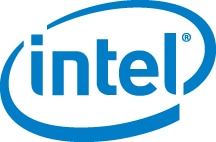July 21, 2017
Finding the Right Data Center Workloads for the Cloud
Considering the details of a migration will help IT leaders determine the best home for applications and data within a hybrid environment.

One of the most common questions data center operators have is which workloads they should move to the cloud. A frequent follow-up is which cloud is the best destination for each workload.
The cloud has become a regular element of most IT strategies. Its flexibility, agility, scalability and budget reliability make it an attractive option for nearly any organization. Forbes reported earlier this year that by mid-2018, 80 percent of all IT budgets will be committed to cloud solutions.
But not everything can move to the cloud. Speaking recently at CDW’s Summit on Optimizing the Next-Generation Data Center, Dell’s director of customer solution centers, Moe Khan, noted that IT leaders have many reasons for maintaining in-house data centers and retaining workloads in them. The result for many organizations: a hybrid IT environment in which specific workloads are strategically placed with a public cloud provider, a private cloud or an in-house data center.
In fact, the Forbes report stated that hybrid cloud adoption grew three times over the last year, increasing from 19 percent of organizations to 57 percent.
Critical Decision
So how do data center operators decide what stays in house and what goes to the cloud?
- What are the financial implications of the move?
- Does the organization have personnel available to maintain the workload in house?
- What other demands are being made on talented IT personnel?
- Can a systems integrator help the organization complete the migration?
- Can a managed service provider host this workload?
Bill Weaver, vice president for advanced technologies with CDW, added a few more questions to the list:
- How will data migrate to the new environment?
- What are the security implications of the move?
- How much risk is the organization willing to tolerate with a specific workload?
Many small and midsize businesses have a greater appetite for risk than organizations in industries that frequently handle sensitive data, such as healthcare providers or financial firms, Weaver noted.
The Risk of Getting IT Wrong
Making the right migration decision is critical, the panelists said. In addition to the security risks associated with moving a workload to an unsuitable cloud environment, organizations face significant financial ramifications.
Migrating data and applications involves a considerable investment of time and money. Moving a workload back in house due to compliance or other concerns further drains valuable resources.
The benefits of moving to the cloud make it an attractive option, one that more organizations are choosing every day. But IT leaders who migrate workloads with a clear strategy based on careful study will make the most of their hybrid environments.
To learn more about how organizations are moving to an IT strategy that includes in-house resources and cloud services, read the CDW article “The Evolution Toward Hybrid IT Infrastructure.”




